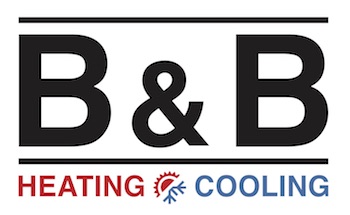
A furnace is often a background player at home, ensuring you're warm across the cold winter months. It frequently doesn’t get noticed until something breaks down.
One cause may be that your furnace has a cracked heat exchanger. It can be a safety risk, so it’s critical to learn the evidence of a cracked heat exchanger and what you can do if you suspect that may be the problem.
What Is a Heat Exchanger in a Furnace?
A heat exchanger helps transition heat from the combustion chamber of your furnace to the air that circulates through the system. It usually accomplishes this through coils or tubes that heat the air while acting as a barrier to keep byproducts produced in the combustion chamber, called flue gasses, from leaking out into your home.
Is a Cracked Heat Exchanger Dangerous?
Because of its key role, it shouldn't come as a surprise that a broken heat exchanger can be hazardous. Cracks in the heat exchanger can allow dangerous gasses – such as carbon monoxide, which can be lethal – to circulate throughout your home.
For that reason, never turn on your heating if you think it has a cracked heat exchanger, as this could make your entire household ill. Contact an HVAC professional immediately if you believe your heater has a cracked heat exchanger that should be repaired.
Four Warning Signs of a Cracked Heat Exchanger:
- Furnace shuts off: A cracked heat exchanger could cause your furnace to switch off.
- Unusual Smells: If the air coming out of your furnace has an intense chemical odor, it may be an indicator that gasses are slipping through cracks in your heat exchanger. These gasses, which may smell like formaldehyde, are a significant warning sign.
- Carbon monoxide alarm is triggered or you feel health problems: If a cracked heat exchanger is emitting carbon monoxide into your home, your carbon monoxide alarm could go off or household members might experience signs of carbon monoxide poisoning. Complications include headaches, dizziness, weakness, nausea, vomiting or feeling sleepy. If your alarm goes off or you feel unwell, leave the home right away and then call for help.
- Soot: If you see black sooty accumulating on the exterior of your furnace, it’s an indication something could be seriously wrong.
What You Can Do if Your Furnace Heat Exchanger is Cracked
If you believe your furnace has a cracked heat exchanger, hire a pro well versed in furnace installation Florissant and St. Charles right away so they can inspect your system and, if needed, perform a furnace heat exchanger replacement. Costs will fluctuate depending on the situation, but estimates can roughly suggest $1,000 to $3,000.
Estimates aside, the good news is that heat exchangers are generally included in the warranty. You should review the warranty paperwork on your furnace, because while the warranty may not cover the entire cost of repairs, it could significantly shrink your bill.
How to Prevent a Cracked Heat Exchanger in Your Home
One of the best ways to minimize the risk of problems in your furnace overall is with routine furnace maintenance. Furnaces offer the most benefits when they operate efficiently. Contacting a trained professional to inspect your furnace for broken-down parts, clogged filters and other common problems can keep you from getting a big bill later on.
It’s also a good idea to inspect your furnace filters every few months – it’s encouraged some filters be changed every 90 days or sooner if they are dirty or grimy. While the filters aren't connected to the heat exchanger itself, the strain of drawing air through a clogged filter makes your entire furnace work more vigorously to complete its job. And the harder your furnace works, the more deterioration parts like the heat exchanger will experience.
